- Home
- Victor Hugo
The Toilers of the Sea Page 2
The Toilers of the Sea Read online
Page 2
At the center of the novel, the two towers of the Douvres, with the ship lodged between them, are one of Hugo's giant monograms, like the H of the guillotine in Ninety-Three or the H of the twin towers of Notre-Dame. This vertiginous structure is the concrete form of Hugo's mental discipline, around which the other allegories are entwined: the self-destructive nature of love, the civilizing mission of the lone hero, and his metaphysical fear of the void, embodied in that half-imagined, ungraspable creature, the pieuvre, "one of those embryos of terrible things that the dreamer glimpses confusedly through the window of night."
The Toilers of the Sea was a huge popular success, which says much about changes in reading habits. "Nineteenth-century novel" was not yet synonymous with dainty drawing-rooms and etiquette, although, even in 1866, a novel about an illiterate sailor and "the silent inclemency of phenomena going about their own business" was considered somewhat eccentric.
Five editions hurtled off the presses in the first three months. French critics were predictably frosty. In France, to insult the exiled Victor Hugo was to show allegiance to the regime of Napoleon III. One pedant published a brochure titled A Badly Mistreated Mollusc, or M. Victor Hugo's Notion of Octopus Physiology. Critics, said Hugo, are people who look at the sun and complain about its spots. A noble exception was Alexandre Dumas, who threw a pieuvre-tasting party in honor of the novel. Most writers remained silent. Like the Dreyfus Affair, the exile of Victor Hugo is one of the great moral touchstones in French history.
An English translation appeared almost immediately. Unfortunately, it sanitized the text. Gone were the underwater pebbles resembling the heads of green-haired babies, the evocation of springtime as the wet dream of the universe, and, of course, the nightmarish anatomy of the pieuvre with its single orifice.
British critics chortled at Hugo's extraordinary attempts at English. Captain Clubin was greeted with a hearty "Good-bye, Captain." A "cliff " in Scotland was called "la Premiere des Quatre" (the Firth of Forth), and the bagpipes turned into a "bug-pipe." Hugo was sensitive to reviews and found these comments strangely discourteous. He had dedicated his novel to the people of Guernsey and even gave the first word to England: "La Christmas de 182 . . . fut remarquable a Guernesey." As Robert Louis Stevenson pointed out, these blunders were part of Hugo's weird charm. In fact, his fondness for the craggy consonants of Anglo-Saxon, the mad desolation of Celtic myth, and the swirling hallucinations of fog and forest give his Channel Island novels--The Toilers of the Sea, The Laughing Man, and Ninety-Three--a curious Britishness reminiscent of J.R.R. Tolkien and Mervyn Peake.
Hugo's so-called faults did nothing to harm the book's success. Eight English editions were published in the first six years. Later, a sixpenny edition brought the novel to a vast audience. The Toilers of the Sea remained a bestseller until long after Hugo's death. In 1900, some 3,250 copies were being sold every year in Britain.
Since then, Hugo's vast oeuvre has effectively been whittled down to a few hundred pages. The Hunchback of Notre-Dame and Les Miserables are now the only visible peaks of a literary continent that comprises seven novels, eighteen volumes of poetry, twenty-one plays, a small museum of paintings and drawings, and approximately 3 million words of history, criticism, travel writing, philosophy, and coded diaries.
Hugo would not have been surprised by this submersion of his work. All his novels end with images of erasure and decay. He knew that even masterpieces fall into disrepair and are eventually engulfed by incomprehensibility.
But in The Toilers of the Sea, it is still possible to experience the great outdoors of an inexhaustible imagination. This is not a novel for tidy minds who like to read classic fiction in their Sunday best. As the genteel reviewer of Fraser's Magazine remarked in 1866, after reading "A Word on the Secret Cooperation of the Elements," Hugo seems intent on "troubling us, offending us, buffeting us in the face; we come out of this chapter in a dishevelled unseemly condition."
GRAHAM ROBB's many books include Victor Hugo: A Biography, which won the 1997 Whitbread Biography Award. He has also written major biographies of Balzac and, most recently, Rimbaud.
THE ARCHIPELAGO OF THE CHANNEL
I
ANCIENT CATACLYSMS
The Atlantic wears away our coasts. The pressure of the current from the Pole deforms our western cliffs. This wall that shields us from the sea is being undermined from Saint-Valery-sur-Somme to Ingouville; huge blocks of rock tumble down, the sea churns clouds of boulders, our harbors are silted up with sand and shingle, the mouths of our rivers are barred. Every day a stretch of Norman soil is torn away and disappears under the waves.
This tremendous activity, which has now slowed down, has had terrible consequences. It has been contained only by that immense spur of land we know as Finistere. The power of the flow of water from the Pole and the violence of the erosion it causes can be judged from the hollow it has carved out between Cherbourg and Brest. The formation of this gulf in the Channel at the expense of French soil goes back before historical times; but the last decisive act of aggression by the ocean against our coasts can be exactly dated. In 709, sixty years before Charlemagne came to the throne, a storm detached Jersey from France. The highest points of other territories submerged in earlier times are still, like Jersey, visible. These points emerging from the water are islands. They form what is called the Norman archipelago. This is now occupied by a laborious human anthill. The industry of the sea, which created ruin, has been succeeded by the industry of man, which has made a people.
II
GUERNSEY
Granite to the south, sand to the north; here sheer rock faces, there dunes. An inclined plane of meadowland with rolling hills and ridges of rock; as a fringe to this green carpet, wrinkled into folds, the foam of the ocean; along the coast, low-built fortifications; at intervals, towers pierced by loopholes; lining the low beaches, a massive breastwork intersected by battlements and staircases, invaded by sand and attacked by the waves, the only besiegers to be feared; windmills dismasted by storms, some of them--at the Vale, Ville-au-Roi, St. Peter Port, Torteval--still turning; in the cliffs, anchorages; in the dunes, sheep and cattle; the shepherds' and cattle herds' dogs questing and working; the little carts of the tradesmen of the town galloping along the hollow ways; often black houses, tarred on the west side for protection from the rain; cocks and hens, dung heaps; everywhere cyclopean walls; the walls of the old harbor, now unfortunately destroyed, were a fine sight, with their shapeless blocks of stone, their massive posts, and their heavy chains; farmhouses set amid trees; fields enclosed by waist-high drystone walls, forming a bizarre checkerboard pattern on the low-lying land; here and there a rampart built around a thistle, granite cottages, huts looking like casemates, little houses capable of withstanding a cannonball; occasionally, in the wildest parts of the country, a small new building topped by a bell--a school; two or three streams flowing through the meadows; elms and oaks; a lily found only here, the Guernsey lily; in the main plowing season, plows drawn by eight horses; in front of the houses, large haystacks on circular stone bases; expanses of prickly furze; here and there gardens in the old French style with clipped yew trees, carefully shaped box hedges and stone vases, mingled with orchards and kitchen gardens; carefully cultivated flowers in countryfolk's gardens; rhododendrons among potatoes; everywhere seaweed laid out on the grass, primrose-colored; in the church yards no crosses, but slabs of stone standing erect, seeming in the moonlight like white ladies; ten Gothic bell towers on the horizon; old churches, new dogmas; Protestant worship housed in Catholic architecture; scattered about in the sand and on the promontories, the somber Celtic enigma in its various forms--menhirs, peulvens, long stones, fairy stones, rocking stones, sounding stones, galleries, cromlechs, dolmens, fairies' houses; remains of the past of all kinds; after the druids the priests; after the priests the rectors; memories of falls from heaven; on one point Lucifer, at the castle of the Archangel Michael; on another, Icart Point, Icarus; almost as many flowe
rs in winter as in summer. This is Guernsey.
III
GUERNSEY (CONTINUED)
Fertile land, rich, strong. No better pasturage. The wheat is celebrated; the cows are illustrious. The heifers grazing the pastures of St. Peter-in-the-Wood are the equals of the famed sheep of the Confolens plateau. The masterpieces produced by the plow and pastureland of Guernsey win medals at agricultural shows in France and England.
Agriculture benefits from well-organized public services, and an excellent network of communications gives life to the whole island. The roads are very good. Lying on the ground at the junction of two roads is a slab of stone bearing a cross. The earliest known bailiff of Guernsey, recorded in 1284, the first on the list, Gaultier de la Salle, was hanged for various acts of iniquity, and this cross, known as the Bailiff 's Cross, marks the spot where he knelt and prayed for the last time. In the island's bays and creeks the sea is enlivened by the multicolored, sugarloaf-shaped mooring buoys, checked red and white, half black and half yellow, variegated in green, blue, and orange in lozenge, mottled and marble patterns, which float just under the water. Here and there can be heard the monotonous chant of a team hauling some vessel, heaving on the towrope. Like the fishermen, the farmworkers look content with their lot; so, too, do the gardeners. The soil, saturated with rock dust, is powerful; the fertilizer, which consists of sand and wrack, adds salt to the granite. Hence the extraordinary vitality and richness of the vegetation--magnolias, myrtles, daphnes, rose laurels, blue hydrangeas; the fuchsias are overabundant; there are arcades of three-leaved verbenas; there are walls of geraniums; oranges and lemons flourish in the open; there are no grapes, which ripen only under glass but when grown in greenhouses are excellent; camellias grow into trees; aloe flowers can be seen in gardens, growing taller than a house. Nothing can be more opulent and prodigal than this vegetation that masks and ornaments the trim fronts of villas and cottages.
Attractive on one side, Guernsey is terrible on the other. The west coast of the island, exposed to winds from the open sea, has been devastated. This is a region of coastal reefs, squalls, careening coves, patched-up boats, fallow land, heath, poor hovels, a few low, shivering hamlets, lean sheep and cattle, short salty grass, and a general air of harsh poverty. Lihou is a small barren island just off the coast that is accessible at low tide. It is covered with scrub and rabbit burrows. The rabbits of Lihou know the time of day, emerging from their holes only at high tide and setting man at defiance. Their friend the ocean isolates them. Fraternal relations of this kind are found throughout nature.
If you dig down into the alluvial soil of Vazon Bay you come upon trees. Here, under a mysterious layer of sand, there was once a forest.
The fishermen so harshly treated by this wind-beaten west coast make skillful pilots. The sea around the Channel Islands is peculiar. Cancale Bay, not far away, is the spot in the world where the tides rise highest.
IV
THE GRASS
The grass of Guernsey is the same grass as anywhere else, though a little richer: a meadow on Guernsey is almost like a lawn in Cuges or Gemenos.2 You find fescues and tufted hair-grasses, as in any other grass, together with common star-grass and floating manna grass; mountain brome, with spindle-shaped spikelets; the phalaris of the Canaries; agrostis, which yields a green dye; rye grass; yellow lupin; Yorkshire fog, which has a woolly stem; fragrant vernal grass; quaking grass; the rain daisy; wild garlic, which has such a sweet flower but such an acrid smell; timothy grass; foxtail, with an ear in the shape of a club; needle grass, which is used for making baskets; and lyme grass, which is useful for stabilizing shifting sands. Is this all? By no means: there are also cocksfoot, whose flowers grow in clusters; panic millet; and even, according to local agricultural experts, bluestem grass. There are the bastard hawkweed, with leaves like the dandelion, which marks the time of day, and the sow thistle of Siberia, which foretells the weather. All these are grasses, but this mixture of grasses is not to be found everywhere: it is peculiar to the archipelago. It requires granite for its subsoil and the ocean to water it.
Now imagine a thousand insects crawling through the grass and flying above it, some hideous, others charming; under the grass longicorns, longinases, weevils, ants engaged in milking aphids, their milch cows, dribbling grasshoppers, ladybirds, click beetles; on the grass and in the air dragonflies, ichneumons, wasps, golden rose-beetles, bumblebees, lace-winged flies, red-bellied gold wasps, the noisy hoverflies--and you will have some idea of the reverie-inducing spectacle that the Jerbourg ridge or Fermain Bay, around midday in June, offers an entomologist who is something of a dreamer or a poet who is something of a naturalist.
Suddenly, under this sweet green grass, you will notice a small square slab of stone inscribed with the letters WD, which stand for War Department. This is fair and proper. It is right that civilization should show itself here: otherwise the place would be wild. Go to the banks of the Rhine and seek out the most isolated corners of the landscape. At some points it is so majestic that it seems pontifical: God, surely, must be more present here than elsewhere.
Penetrate into the remote fastnesses where the mountains offer the greatest solitude and the forests the greatest silence; choose, let us say, Andernach and its surroundings; visit the obscure and impassive Laacher See, so unknown that it is almost mysterious. No tranquillity can be found more august than this; universal life is here in all its religious serenity; no disturbances; everywhere the profound order of nature's great disorder; walk with a softened heart in this wilderness; it is as voluptuous as spring and as melancholy as autumn; wander about at random; leave behind you the ruined abbey, lose yourself in the moving peace of the ravines, amid the song of birds and the rustle of leaves; drink fresh spring water in your cupped hand; walk, meditate, forget. You come upon a cottage at the corner of a hamlet buried under the trees; it is green, fragrant, and charming, clad in ivy and flowers, full of children and laughter. You draw nearer, and on the corner of the cottage, which is bathed in a brilliant alternation of shadow and sunlight, on an old stone in the old wall, below the name of the hamlet, Niederbreisig, you read 22. LANDW. BATAILLON 2. COMP.
You thought you were in a village: you find that you are in a regiment. Such is the nature of man.
V
THE PERILS OF THE SEA
An overfall3 extends along the whole of the west coast of Guernsey, which has been skillfully dissected by the waves. At night, on rocky points with a sinister reputation, strange lights--seen, it is said, by prowlers along the shore--warn or deceive. These same prowlers, bold and credulous characters, distinguish under the water the legendary sea cucumber, that infernal marine nettle that will set a man's hand on fire if he touches it. Some local names, for example, Tinttajeu (from Welsh Tin-Tagel), point to the presence of the Devil. As Eustace (the name of Wace) says in the old lines--
Then surged the sea,
The waves 'gan swell and stir,
The skies grew black, and black the clouds.
And soon the sea was all aroused.
The Channel is as unsubdued today as it was in the time of Tewdrig, Umbrafel, Amon Dhu, the Black, and the knight Emyr Lhydau,4 who sought refuge on the island of Groix, near Quimperle. In these parts the ocean puts on coups de theatre of which man must beware. This, for example, which is one of the commonest caprices of the winds in the Channel Islands: a storm blows in from the southeast; then there is a period of dead calm; you breathe again; this sometimes lasts for an hour; suddenly the hurricane, which had died down in the southeast, returns from the northwest; whereas previously it took you in the rear, it now reverses direction and takes you head on. If you are not a former pilot and an old sailor, and if you have not been careful to change your tack when the wind changed direction, it is all over with you: the vessel goes to pieces and sinks. Ribeyrolles,5 who died in Brazil, jotted down from time to time during his stay on Guernsey a personal diary of the events of the day, a page from which we have in front of us:
&n
bsp; 1st January: New Year gifts. Storm. A ship coming from Portrieux was lost yesterday on the Esplanade.
2nd: Three-master lost in Rocquaine Bay. It hailed from America. Seven men dead. Twenty-one saved.
3rd: The packet did not arrive.
4th: The storm continues.
14th: Rain. Landslide, which killed one man.
15th: Stormy weather. The Fawn could not sail.
22nd: Sudden squall. Five wrecks on the west coast.
24th: The storm persists. Shipwrecks on all sides.
There is hardly ever any respite in this corner of the ocean. Hence the seagull shrieks, echoing down the centuries in this never-ending squall, uttered by the uneasy old poet Lhy-ouar'h-henn, that Jeremiah of the sea. But bad weather is not the greatest peril for navigation in the archipelago: the squall is violent, but violence is a warning sign. You return to harbor, or you head into the wind, taking care to set the center of effort of the sails as low as possible. If the wind blows strong you brail up everything, and you may still come through. The greatest perils in these waters are the invisible perils, which are always present; and the finer the weather the more they are to be dreaded.
In such situations special methods of working the ship are necessary. The seamen of western Guernsey excel in such maneuvers, which can be called preventive. No one has studied so carefully as they the three dangers of a calm sea, the singe, the anuble, and the derruble. The singe or swinge is the current; the anuble ("dark place") is the shoals; the derruble (pronounced terrible ) is the whirlpool, the navel, the funnel formed by underwater rocks, the well beneath the sea.
VI
THE ROCKS
In the archipelago of the Channel the coasts are almost everywhere wild. These islands have charming interiors but a stern and uninviting approach. Since the Channel is a kind of Mediterranean, the waves are short and violent and the tide has a lapping movement. Hence the bizarre battering to which the cliffs are subjected and the deep erosion of the coasts. Skirting these coasts, you pass through a series of mirages. At every turn the rocks try to deceive you. Where do these illusions come from? From the granite. It is very strange. You see huge stone toads, which have no doubt come out of the water to breathe. Giant nuns hasten on their way, heading for the horizon; the petrified folds of their veils have the form of the fleeing wind. Kings with Plutonian crowns meditate on massive thrones, ever under attack by the breakers. Nameless creatures buried in the rock stretch out their arms, showing the fingers of their open hands. All this is the formless coast. Draw nearer, and there is nothing there. Stone can sometimes disappear like this. Here there is a fortress, there a crudely shaped temple, elsewhere a chaos of dilapidated houses and dismantled walls: all the ruins of a deserted city. But there is no city there, no temple, no fortress--only the cliffs. As you draw closer or move farther away, as you drift off or turn back, the coast falls to pieces. No kaleidoscope is quicker to disintegrate. The view breaks apart and re-forms; perspective plays its tricks. This block of rock is a tripod; then it is a lion; then it is an angel and unfolds its wings; then it is a seated figure reading a book. Nothing changes form so quickly as clouds, except perhaps rocks.

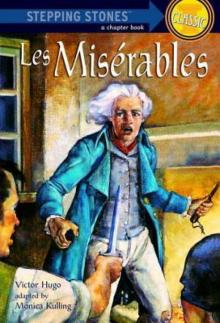 Les Miserables
Les Miserables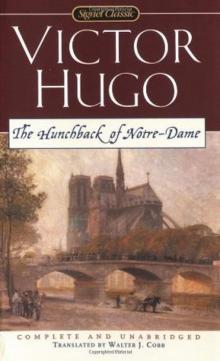 The Hunchback of Notre-Dame
The Hunchback of Notre-Dame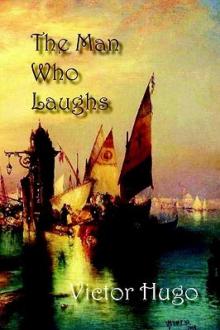 The Man Who Laughs
The Man Who Laughs The Last Day of a Condemned Man
The Last Day of a Condemned Man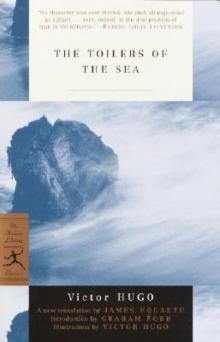 The Toilers of the Sea
The Toilers of the Sea Waterloo
Waterloo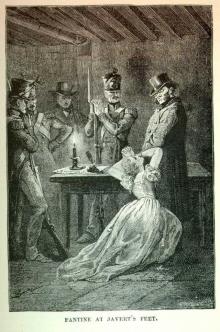 Les Misérables, v. 1/5: Fantine
Les Misérables, v. 1/5: Fantine Les Misérables, v. 3/5: Marius
Les Misérables, v. 3/5: Marius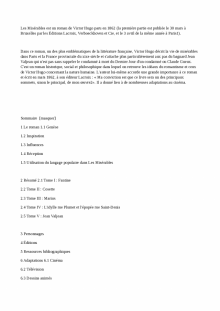 Les Misérables, v. 2/5: Cosette
Les Misérables, v. 2/5: Cosette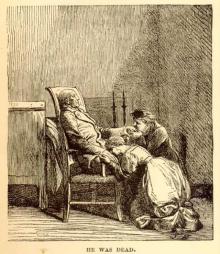 Les Misérables, v. 5/5: Jean Valjean
Les Misérables, v. 5/5: Jean Valjean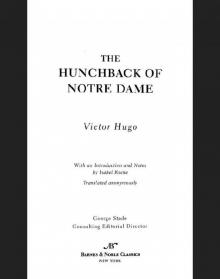 Hunchback of Notre Dame (Barnes & Noble Classics Series)
Hunchback of Notre Dame (Barnes & Noble Classics Series)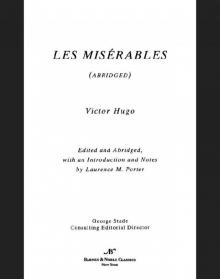 Les Miserables (abridged) (Barnes & Noble Classics Series)
Les Miserables (abridged) (Barnes & Noble Classics Series)